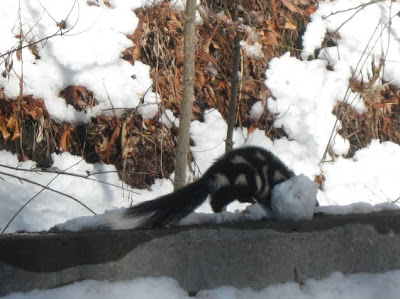•

Being a couple is less stressful
unless you forget your anniversary.
“Once upon a midnight dreary, while I pondered weak and weary,
Over many a quaint and curious volume of forgotten lore,
While I nodded, nearly napping, suddenly there came a tapping,
As of some one gently rapping, rapping at my chamber door.”
We all remember from high school the opening lines of the Edger Allen Poe poem. It presents a picture of ravens as being rather solemn, solitary creatures. Foreboding midnight visitors. Loners clothed in darkness. Well, maybe it was only a metaphor. But a new study conducted by Dr. Nuria Selva and fellow researchers in Poland’s Bialowieza Forest sheds new light onto raven behavior. And the insight comes from, of all places, their poo. Yes, the white messy blotches they leave behind. Science works in mysterious ways.
Young ravens are far from solitary, they hang out in small flocks called congresses. It’s easier to find food if you are in a group. But it’s also stressful. Like a gang of human teenagers, there’s competition and squabbling, fighting for dominance. Disputes often flare at a moments notice.
As they mature, the individual ravens drift away from the congress to seek out a mate and a small territory to defend and call home.
Sound vaguely human?
It’s handier to find food with two pairs of searching eyes than only one. And it’s less stressful being in the company of one partner than 20 or 30 bickering partners.
And how do we know this?
The researchers examined raven droppings and found much lower levels of the hormone corticosterone in the paired individuals. Like other creatures on our planet, corticosterone regulates the stress level of ravens. The higher concentrations found in the flocked birds in a congress meant the younger ravens are dealing with serious stress within the group, while the paired adults lived and worked harmoniously. (Perhaps, our own human congress needs to avoid legislating as a group. No, wait a minute, I think they already do that.)
In my part of the world, ravens are found at the higher elevations of the Great Smoky Mountains. The next time I’m up there, I’ll watch to see if the ebony birds are in pairs or flocks. And emphasize with the ones still dealing with the group dynamics of being in a gang. But, I think I'll avoid the poo.
- Thanks, Karen.
•































































































